Red Star Belgrade has done it again – they’ve made their comeback into the UEFA Champions League after getting the better of Switzerland’s Young Boys on aggregate in their playoff fixtures. The second match between them ended in a draw like the first one did, but the Serbs passed into the group stage because of the away-goal rule.
Serbian champions managed to protect the positive 2-2 result they secured in the first leg with their good defensive tactics and lead them to one more season with Europe’s elite. This tactical analysis will show you how the Red and Whites secured the chance to compete with the best teams in Europe constraining the Swiss to play in the way they planned beforehand.
Lineups
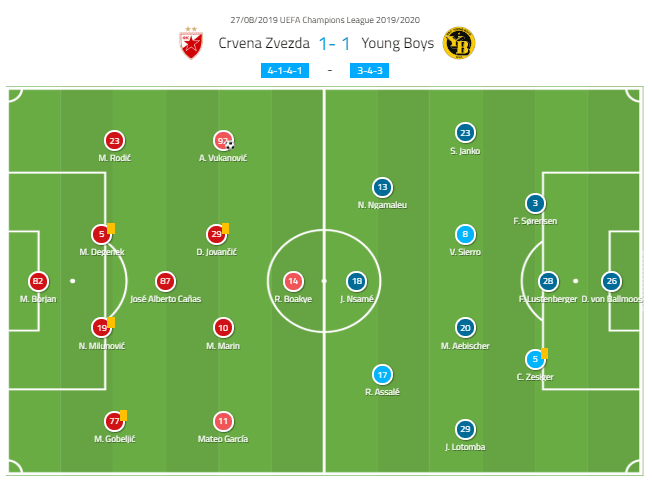
Vladan Milojević set his team in their usual 4-2-3-1 formation with a few reinforcements compared to the match in Bern. Dušan Jovančić started the game instead of Mirko Ivanić, and was the key man in controlling the midfield, while Nemanja Milunović replaced Radovan Pankov at centre-back. Their attacks were once again orchestrated by Marko Marin, who had the support of Aleksa Vukanović on one flank, and Mateo García on the other.
Gerardo Seoane went into the game with a changed formation compared to what he brought out in the first leg. His team started the match in the 3-4-3 formation, which was transformed throughout the 90 minutes, but with Saidy Janko and Jordan Lotomba as their wing-backs. The greatest danger in the attack came from the wingers – Ngoumo Ngamaleu and Roger Assale, with Jean Pierre Nsame spearheading the lineup.
Red Star’s brilliant defensive structure
The home team was once again focused more on defence than on threatening the opposition. They perfected their defensive structure in this season’s qualifiers and it was clear that their block will be their biggest strength in this match.
Although they played their past matches in a 4-4-2 shape, they’ve changed the approach because of the Young Boys’ transformed formation, so the hosts went into the game protecting their goal in a 4-3-2-1 structure.
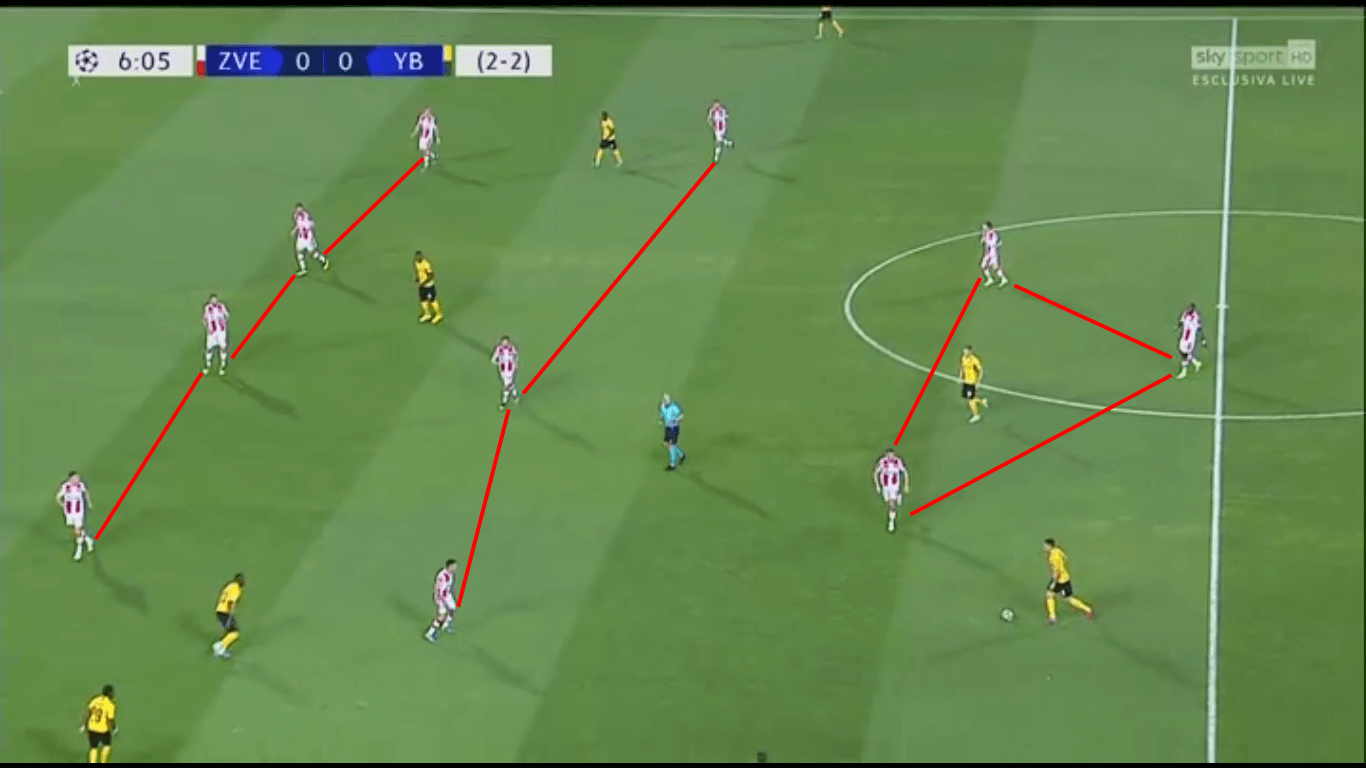
Milojević decided to use this formation in order to double-team the opponent’s wing-backs on the flanks with his wingers lowering to help his full-backs. García and Vukanović did a great job providing defensive support to Marko Gobeljić and Milan Rodić, which lead Crvena Zvezda in winning a lot of balls out of those situations.
Also, José Alberto Cañas was always near the action playing as a security blanket if the opposition’s wide players managed to solve the “1v2” position. Marin and Jovančić closed down the passing lanes to the midfielders so the away team was forced into the traps next to the sidelines.
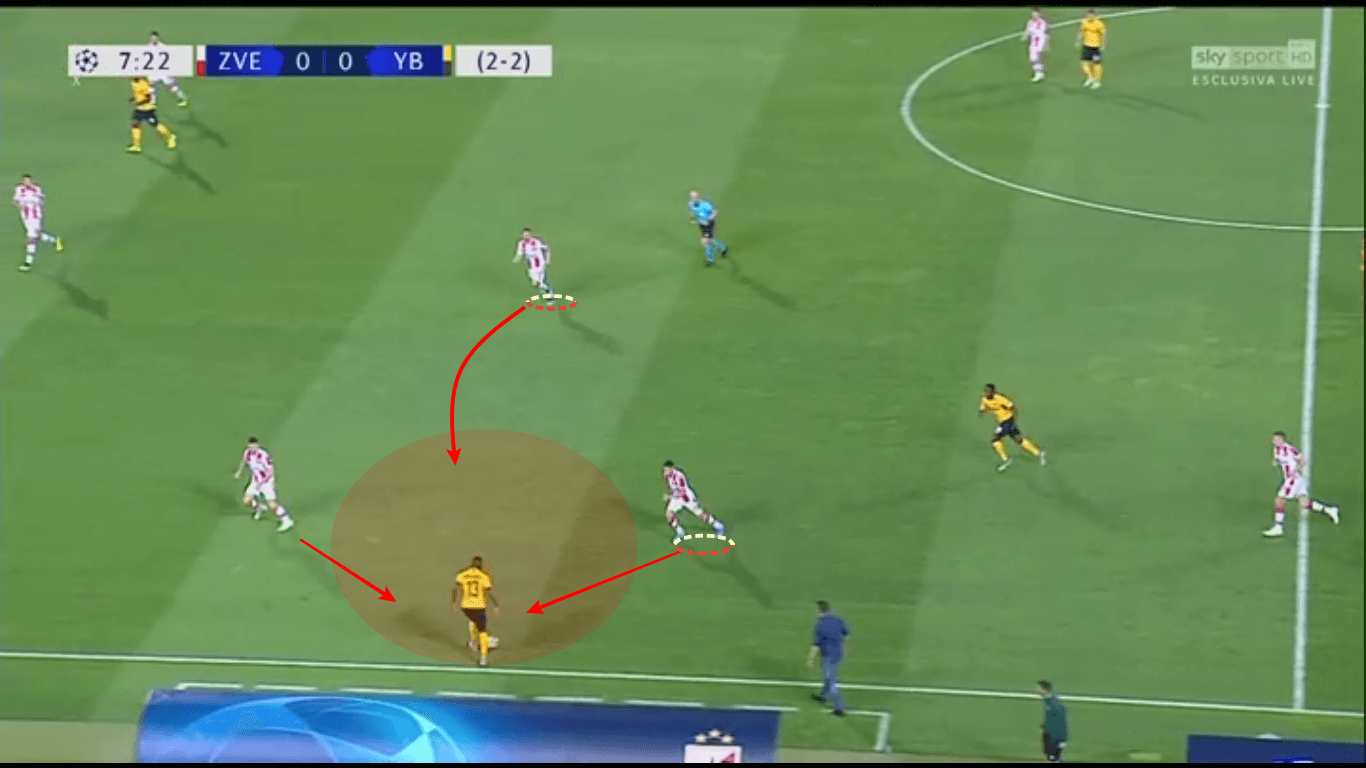
As we can see in the picture above, the Argentine comes lower to help his right-back in guarding the wide player, while the Spaniard moves closer to the action so he could react on a possible second-ball.
Red Star’s wingers were the key players in their defence since they had a lot more defensive tasks than offensive ones. When their team was set up in the block, which went from a central position to the lower one, they dropped very low on the pitch playing as the fifth and the sixth man in the defensive line, basically as full-backs.
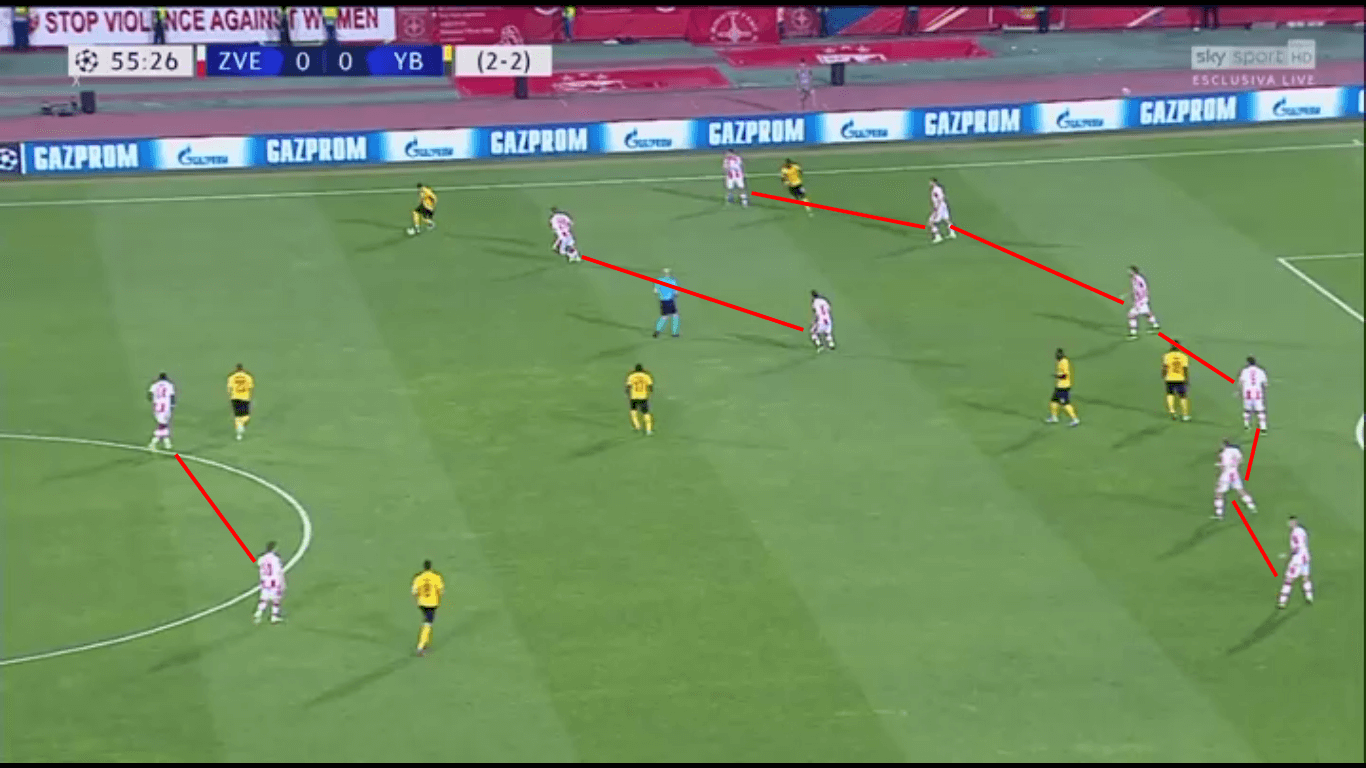
That brought Zvezda to once again play in the hybrid 6-2-2 formation while heavily defending. In this shape, they closed central and inner-corridors so Young Boys was left with circling the block and trying to get to their chances out of crosses.
The Serbians were quite good in the air, especially because Milunović was in the lineup and the away team didn’t create good situations by sending the ball into the box. When Vukanović scored and put his team ahead, they went back to playing in their usual 4-4-2 defensive block, but with the tendency to drop in the hybrid shape they used before the goal.
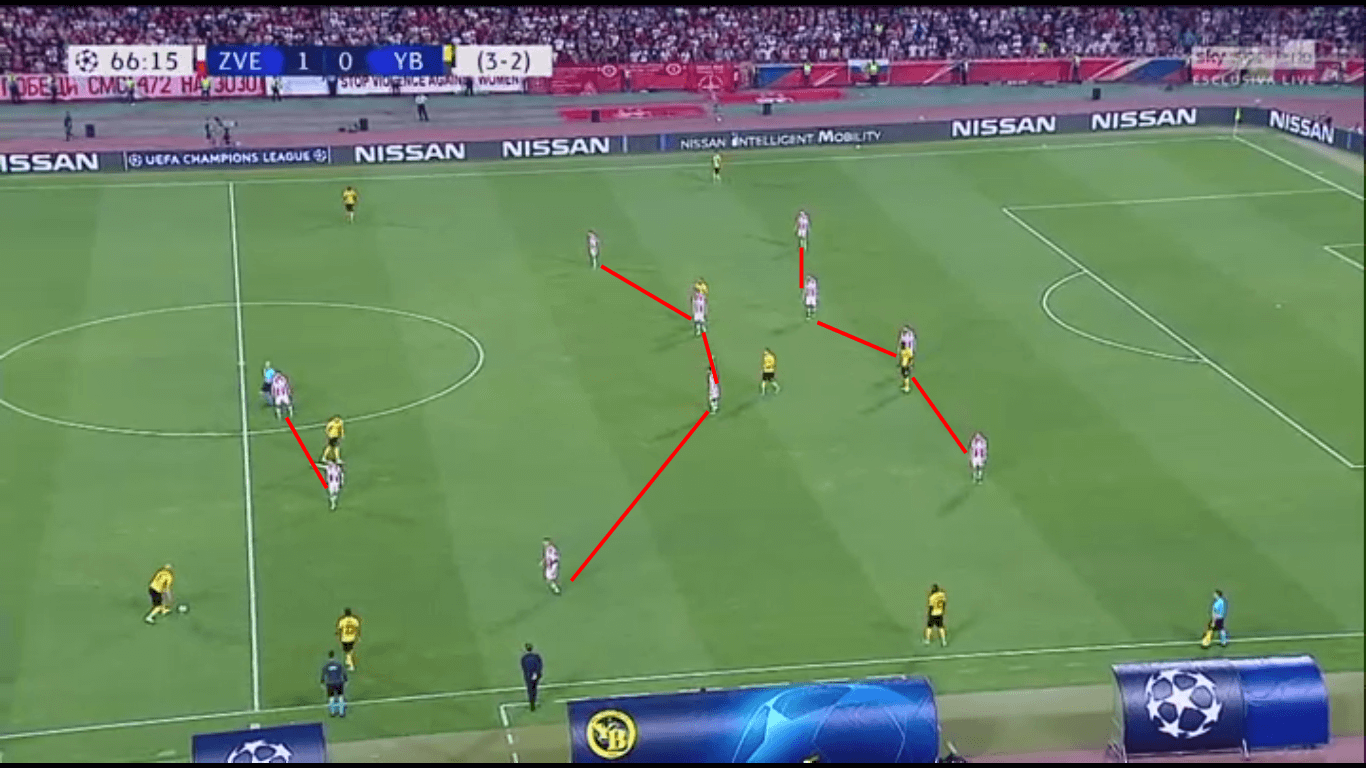
Long balls and wingers’ role
Red Star wasn’t that offensively oriented in this match, but they kept on with attacking in the same manner they did throughout the whole qualifier campaign. The main idea of Milojević’s men was to bypass the midfield with long passes and be better than the opposition when it came to the second-balls.
In order to do so, offensive players of their team provided huge support when these scenarios took place. Usually, the three forwards that played behind Richmond Boakye came closer to him so he could have plenty of options to play the return-pass.
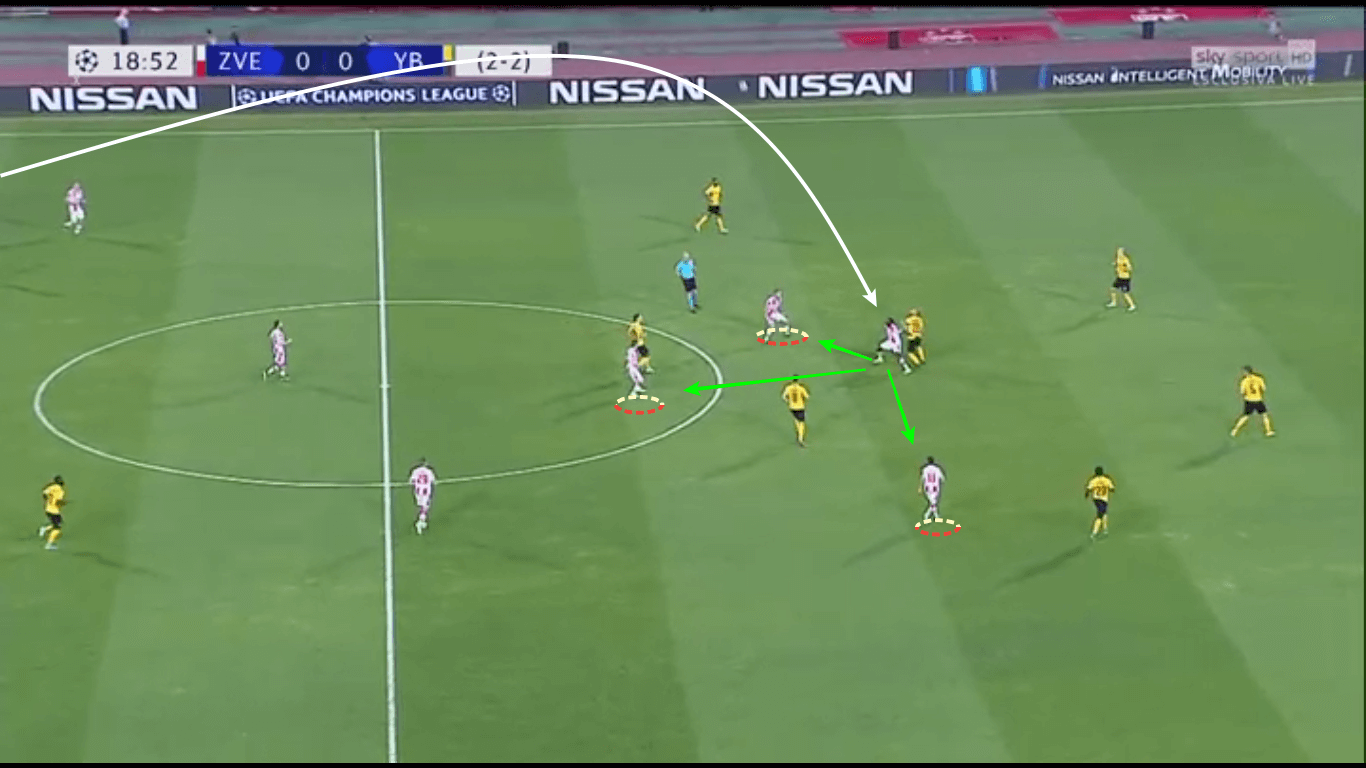
He did a great job playing with his back turned against the Young Boys’ goal and managed to keep the balls for his team in those situations, mostly giving the ball to his team-mates with his second touch.
Wingers were once again the main guys in the offence as they were in defence since their positioning decided in which way their team was going to play. García and Vukanović were there to empty the room for the other players to run in, or to endanger the opposition from the wide positions.
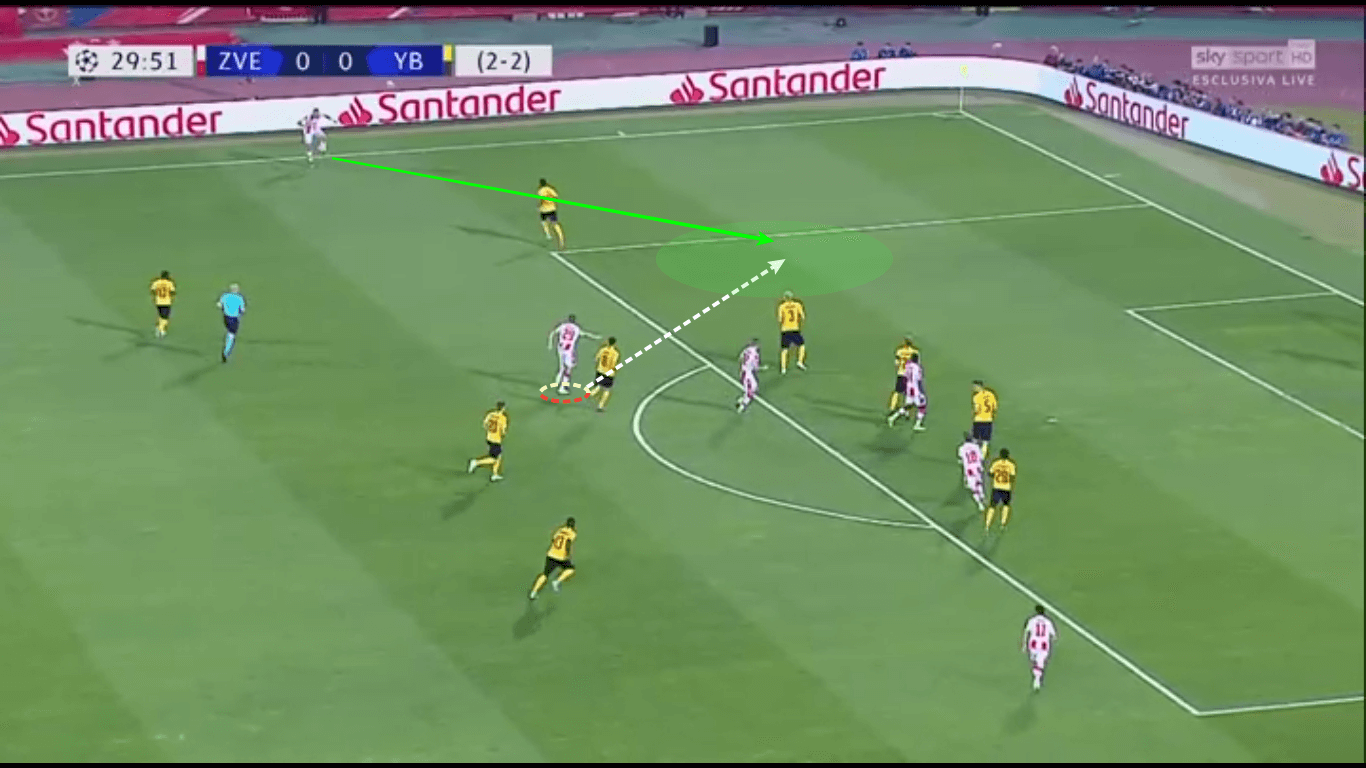
In the picture above, we can see the Serbian winger positioning himself next to the left sideline and freeing the space for Jovančić to run into. Red Star’s number 92, as well as the Argentinean on the other side, also tried to cross it from these positions, and rarely went into dribbling when he had a clear “1v1” situation.
Also, the two of them dictated the movements of their full-backs. When they cut inwards, the space on the flanks was emptied for the defenders to overlap, so Rodić and Gobeljić most often were the wide options for the home team when they played a positional attack.
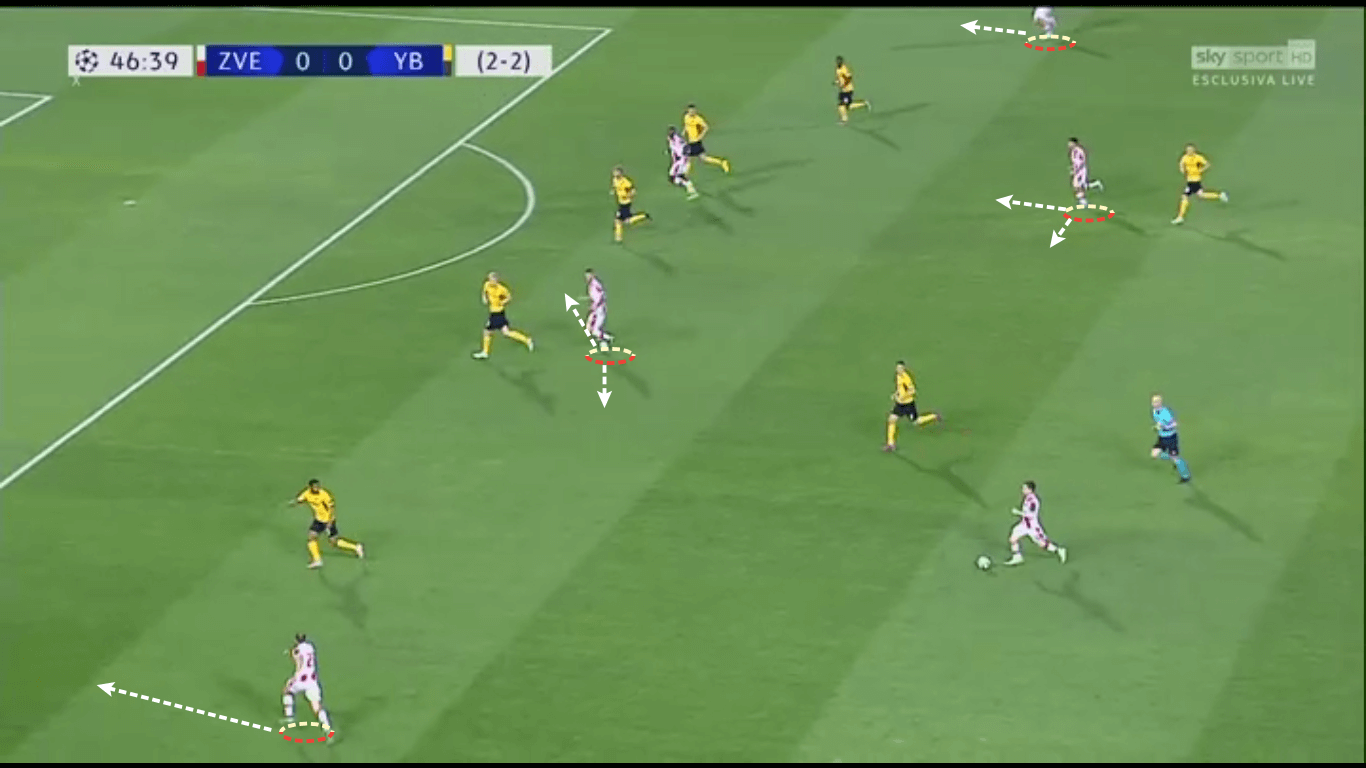
As we can see, García and Vukanović were motioning in half-spaces and letting the flanks for the full-backs. From these positions, the two wingers provided support to either wide players, stayed in the gaps between the lines or went into the box to wait for crosses.
The keys of the attacks were always in the boots of Marko Marin. He kept on being the biggest creative force for the Serbian champions and this will probably continue happening when they start playing the group stage matches.
Young Boys’ struggle
The away team came to Belgrade with a bad result from the first leg since they let the opponents score twice at their turf. Because of that, they were the ones that tried to attack frequently, but Red Star’s well-organised defence prevented them from creating good chances.
Milojević’s players had a clear approach of letting the opposition’s wide centre-backs get the ball in the opening phases of the build-up and then went to press them from multiple sides, while still closing the passing lanes to the Swiss’ midfielders.
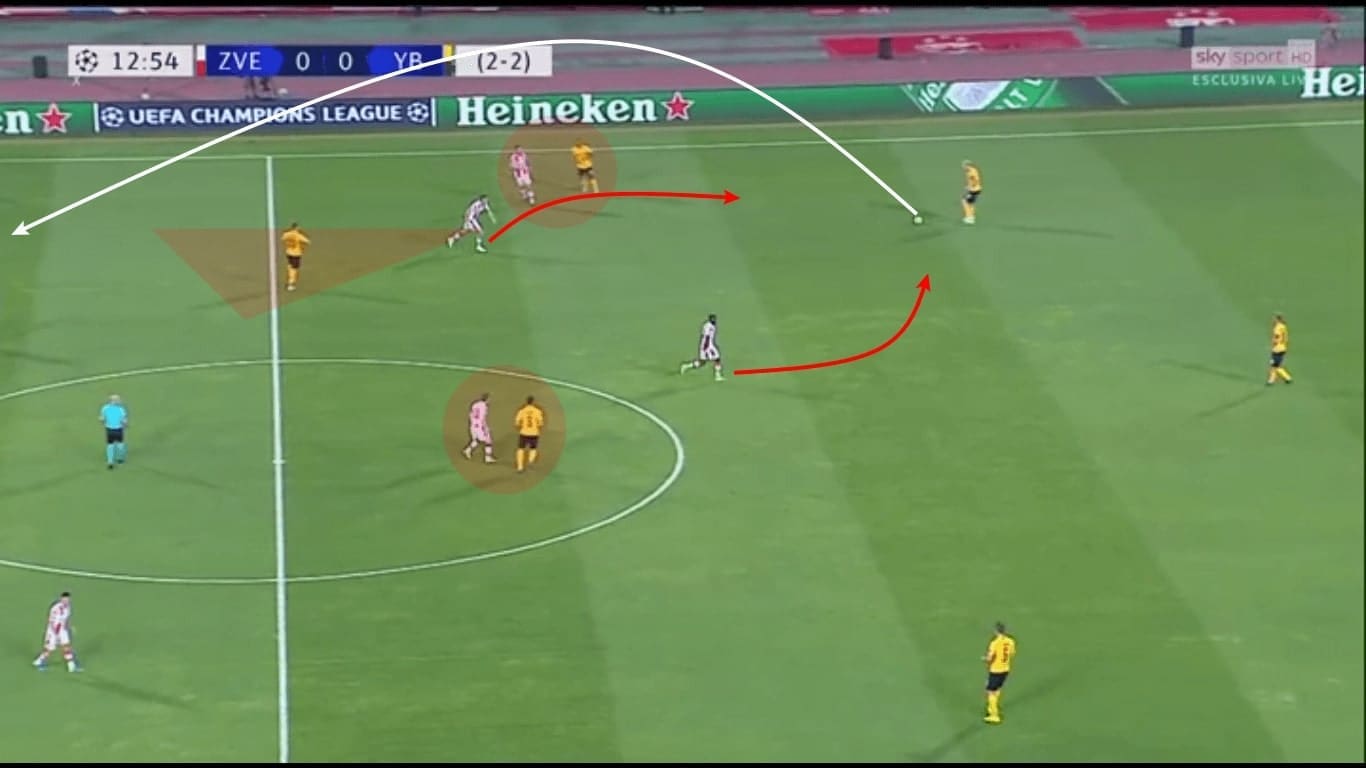
The defenders were forced into these situations with no good passing options for their attack to drive forward, so they needed to try with long balls in the same manner they did in the first match. Now they didn’t have much of success out of those passes since Milunović was clinical in the air, and Crvena Zvezda were eager to regain possession when Young Boys tended to skip the play to their striker.
The main plan of the visitors was to create “2v1” positions on the flanks with their wing-back-winger duos, from which one of them would cut behind the defenders back and get into chances, but Red Star predicted their idea and double-teamed them.
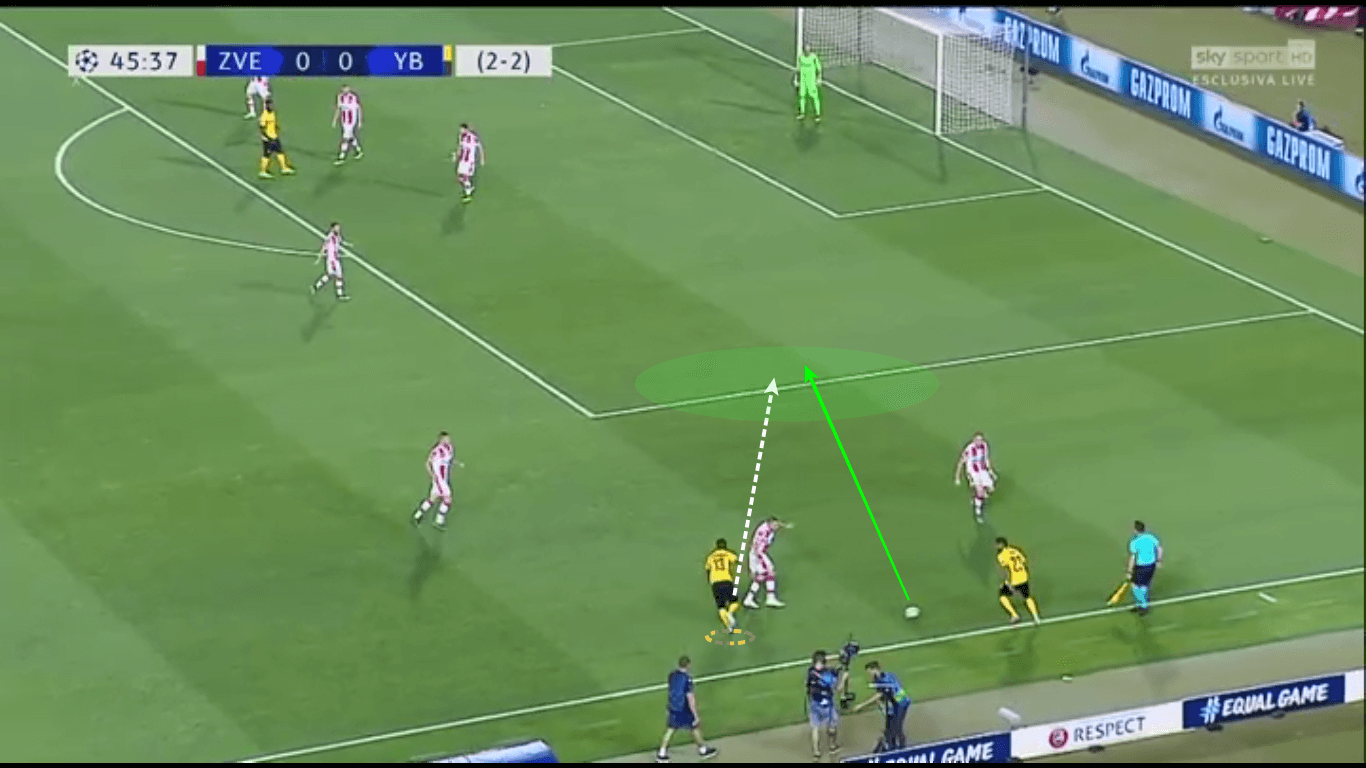
As it is shown in the picture, the home team dropped their wingers to create “2v2s”, but Young Boys a few times managed to resolve them and get into the box. That wasn’t the case in most parts of the match so the Swiss giants had to go with an alternative plan, due to their opponent’s good defensive movements.
They kept on playing deep balls to their attackers, as they were forced to do, but not into the areas of the pitch where the Red Star’s centre-backs were, but between the full-back and the central defender.
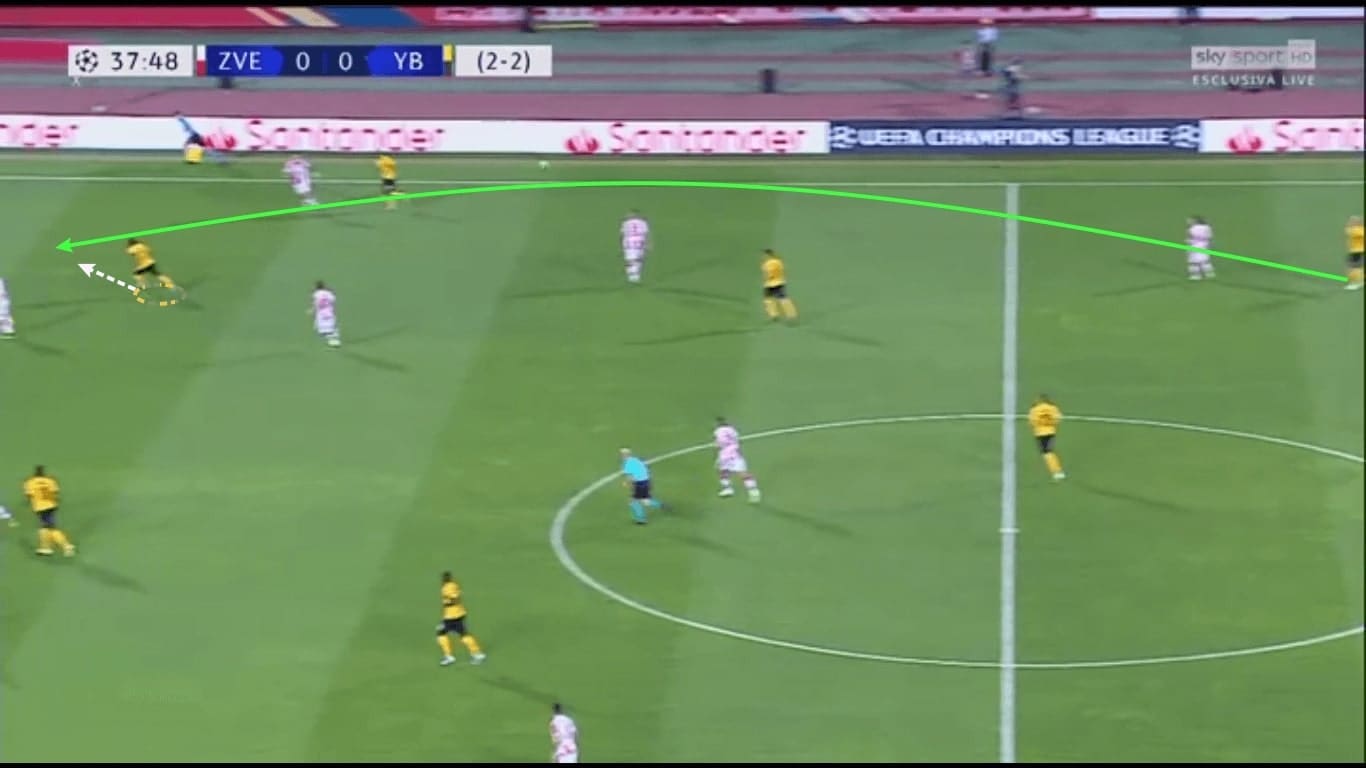
Seoane’s centre-backs sent balls to their team-mates in these zones trying to bring them into the “1v1” situations, but the opposing defenders did a great job getting better of them on the ground, too.
The energy the hosts had in this match allowed them to best their opponent, anticipating all of the Young Boys’ ideas and prevailed with a very organised defence in the process.
Conclusion
Red Star deserved their UEFA Champions League spot with their well-drilled defence and with their great out of possession structure. They prospered through the qualifiers, making their block more resolute, and closer to Europe’s elite, finally getting to compete with the best ones right because of it.
They succeeded in repeating the last year’s result, and now their appetites will surely escalate. As it is shown in the analysis, Milojević’s team will be a very tough opponent for the teams that will try to play passing-game against them, especially in Belgrade where they have huge support from their fans. They won’t step away from their idea of defending, and the biggest teams will have to sweat for the points at the Rajko Mitić Stadium.
Young Boys’ run in Europe isn’t over yet since they will compete in the UEFA Europa League, where they can make a good result if they bring their game on a higher level.

If you love tactical analysis, then you’ll love the digital magazines from totalfootballanalysis.com – a guaranteed 100+ pages of pure tactical analysis covering topics from the Premier League, Serie A, La Liga, Bundesliga and many, many more. Buy your copy of the August issue for just ₤4.99 here.

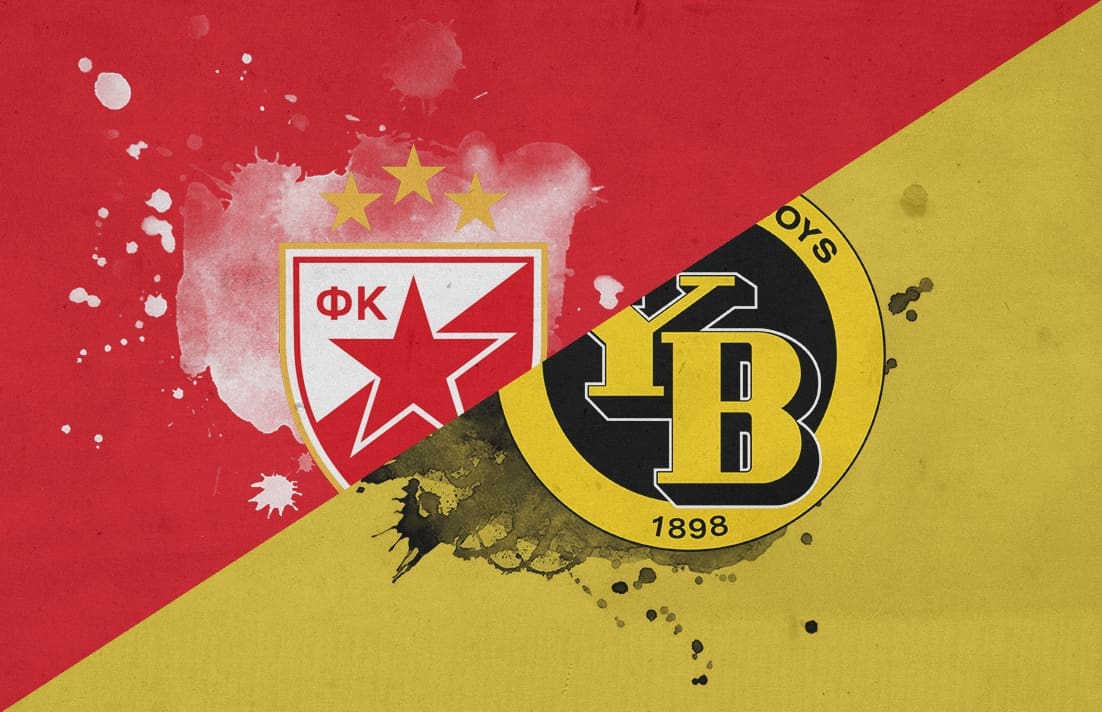



Comments